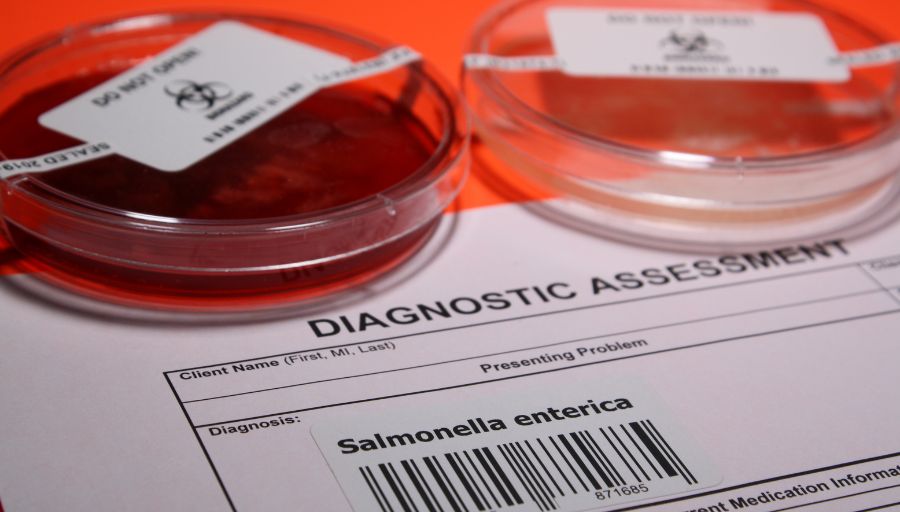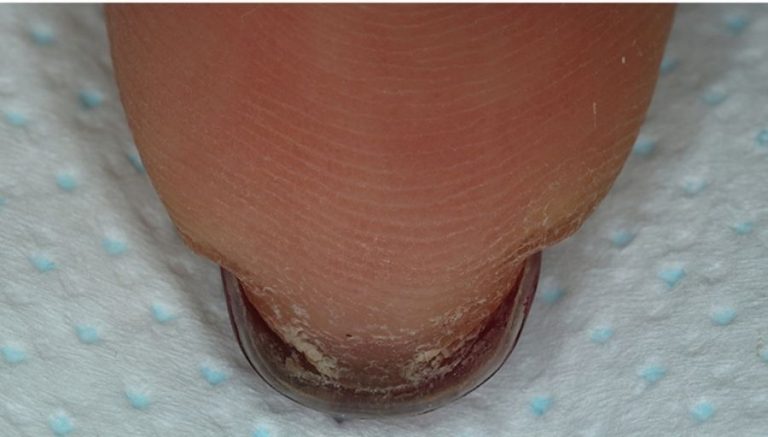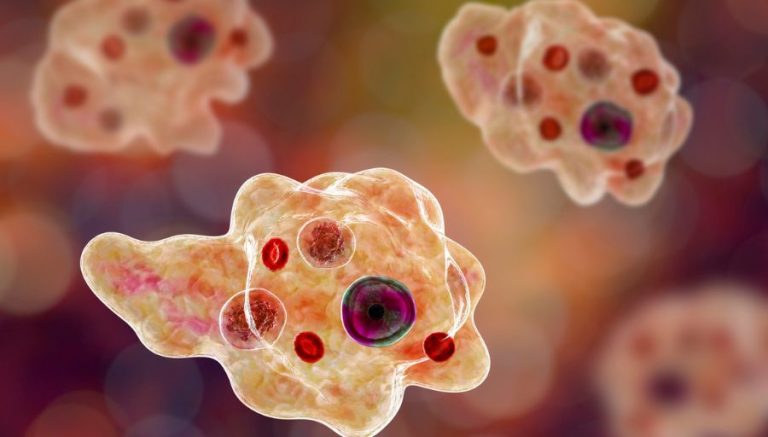7 types of Salmonella Infections | Symptoms, Diagnosis & Treatments
This article covers seven types of salmonella infections. The first type is Salmonella enteritis, followed by Salmonella sepsis, Salmonella meningitis, Salmonella pneumonia, Salmonella arthritis, Salmonella osteomyelitis, and Salmonella pyelonephritis.
1. Salmonella enteritis
Salmonella enteritis, also known as Salmonellosis, is an infection that affects the intestines. Salmonella infection is a foodborne illness typically acquired from eating undercooked meat and eggs or unwashed fruit and vegetables contaminated by bacteria from the Salmonella family.
1.1 Symptoms
A patient with Salmonella enteritis can experience diarrhea, fever, stomach pains, and dehydration.
1.2 Diagnosis
Laboratory tests of the patient’s stools can detect the Salmonella bacterium.
1.3 Treatment
Treatment includes rehydration, antibiotics, and antidiarrheal medicine. Most patients recover without treatment, although there can be severe complications in immune–compromised patients, and some patients may need hospitalization. Providers may vaccinate patients who plan to travel to countries with known poor sanitation.
2. Salmonella sepsis
In Salmonella sepsis, bacteria enter the bloodstream and cause inflammatory changes. It is a complication of Salmonella infection, a foodborne illness typically acquired from eating undercooked meat and eggs or unwashed fruit and vegetables contaminated by bacteria from the Salmonella family.
2.1 Symptoms
Patients with impaired immune systems, babies, and the elderly may develop bacteremia or septicemia when the salmonella bacteria gets into the bloodstream.
A patient with Salmonella sepsis can experience;
- diarrhea;
- high fever;
- stomach pains;
- dehydration; and even
- death in severe cases.
2.2 Diagnosis
Laboratory tests of the patient’s stools and blood can detect the Salmonella bacterium.
2.3 Treatment
Treatment generally requires hospitalization and includes rehydration, antibiotics, and antidiarrheal medicines. Providers may vaccinate patients who plan to travel to countries with known poor sanitation.
3. Salmonella meningitis
Salmonella meningitis occurs when salmonella bacteria enter the bloodstream and localize to the meninges, protective membranes that cover the brain and spinal cord.
It is a complication of Salmonella infection, a foodborne illness typically acquired from eating undercooked meat and eggs or unwashed fruit and vegetables contaminated by bacteria from the Salmonella family.
3.1 Symptoms
A patient with salmonella meningitis can experience;
- meningeal irritation;
- severe headache;
- high fever; and
- severe infections can lead to;
- seizures;
- hydrocephalus;
- subdural empyema or mental retardation; and
- death.
3.2 Diagnosis
Laboratory tests include culture of the patient’s blood and cerebrospinal fluid (CSF) for the Salmonella bacterium.
3.3 Treatment
Treatment requires hospitalization and includes rehydration, antibiotics, and other symptomatic treatment. Providers may vaccinate patients who plan to travel to countries with known poor sanitation.
4. Salmonella pneumonia
Salmonella pneumonia occurs when the salmonella bacteria enter the bloodstream and localize to the lungs, causing inflammation and swelling; it is a complication of Salmonella infection, a foodborne illness typically acquired from eating undercooked meat and eggs or unwashed fruit and vegetables contaminated by a bacteria from the Salmonella family.
4.1 Symptoms
A patient with Salmonella pneumonia will experience;
- shortness of breath;
- chest pain;
- cough with phlegm;
- fever;
- abdominal pain;
- vomiting; and
- diarrhea.
4.2 Diagnosis
Laboratory tests include culture of the patient’s blood, sputum, and pleural aspiration fluid for the Salmonella bacterium. Bronchoscopy may be performed to obtain culture specimens, rinse or wash out the lung cavity, and treat abscess or empyema.
4.3 Treatment
Treatment includes antibiotics and, if necessary, oxygen therapy. Providers may vaccinate patients who plan to travel to countries with poor sanitation and regions where Salmonella infection is endemic.
5. Salmonella arthritis
Salmonella arthritis occurs when the salmonella bacteria enter the bloodstream and migrate to the joints, causing swelling and inflammation; it is a complication of Salmonella infection, a foodborne illness typically acquired from eating undercooked meat and eggs or unwashed fruit and vegetables contaminated by a bacteria from the Salmonella family.
5.1 Symptoms
Patients with Salmonella arthritis can experience;
- pain, heat, redness, and swelling of the joints, usually of the lower extremities;
- body ache;
- fever;
- stomach pains;
- vomiting; and
- diarrhea.
5.2 Diagnosis
Laboratory tests include blood culture and fluid from joint aspiration for the salmonella bacterium. MRI and X–ray can detect inflammation and fluid in the joints.
5.3 Treatment
Treatment includes antibiotics and, in severe cases, surgical intervention. Providers may vaccinate patients who plan to travel to countries with known poor sanitation and regions where the illness is endemic.
6. Salmonella osteomyelitis
Salmonella osteomyelitis refers to bone inflammation caused by the salmonella bacteria, which spread to the bone from an open wound such as a contaminated fracture or through the blood from a salmonella gastrointestinal infection.
Salmonella infection is a foodborne illness typically acquired from eating undercooked meat and eggs or unwashed fruit and vegetables contaminated by bacteria from the Salmonella family.
6.1 Symptoms
Salmonella osteomyelitis is rare in healthy individuals; it typically affects patients with genetic diseases such as sickle cell anemia and thalassemia, autoimmune diseases such as diabetes mellitus and systemic lupus erythematosus, and other immune–compromising diseases.
A patient with Salmonella osteomyelitis will experience;
- spine, bone, and joint pain;
- body ache;
- fever;
- stomach pain;
- vomiting; and
- diarrhea.
6.2 Diagnosis
Laboratory tests include a culture of the patient’s blood and bone marrow for the salmonella bacterium. MRI and X–ray will reveal destruction and thinning of the bone structure.
6.3 Treatment
Treatment includes antibiotics and, in severe cases, surgical intervention. Providers may vaccinate patients who plan to travel to countries with known poor sanitation and regions where typhoid is endemic.
7. Salmonella pyelonephritis
Salmonella pyelonephritis is a complication of Salmonella infection, a foodborne illness typically acquired from eating undercooked meat and eggs or unwashed fruit and vegetables contaminated by a bacteria from the Salmonella family, in which the salmonella bacteria enter the bloodstream and localize to the kidneys and cause inflammatory changes.
7.1 Symptoms
A patient with Salmonella pyelonephritis can experience;
- impaired renal function;
- burning on urination;
- low back pain;
- fever;
- stomach pains;
- vomiting; and
- diarrhea.
7.2 Diagnosis
Laboratory tests include cultures of the patient’s urine and blood to detect the Salmonella bacterium.
7.3 Treatment
Treatment includes antibiotics and, in severe cases, hospitalization. Providers may vaccinate patients who plan to travel to countries with known poor sanitation and regions where typhoid is endemic.








